
To Mount Haguro
To My Ryokan at Mount Haguro
This map shows my approximate route.
However, since Google Maps won't let you specify
multi-segment transit routes,
it's driving directions.
I took a train from Yamagata to Shinjō,
a bus from there to Amarume,
a train to Tsuruoka,
and a bus to the base of Mount Haguro.
Once there, I had a wonderful stay in a ryokan,
a traditional Japanese inn.
By Train and Bus to Tsuruoka
I had been staying in Yamagata while visiting the Yamadera temple complex. Now I was going to Mount Haguro. I started by taking a Mini-Shinkansen, running north on the Ōu Main Line to Shinjō.
Normally I would have transferred to the Rikuu West Line to Amarume. However, trains on that line were suspended due to a tunnel construction project. So, it was onto a JR bus. It ran non-stop to the Amarume station, on the Uetsu Line. After a short wait on this platform, my second train of the day arrived.

There's a train about every hour through the day, except for a two hour gap in the late morning. From here it would be three stops in 16 minutes to reach Tsuruoka.
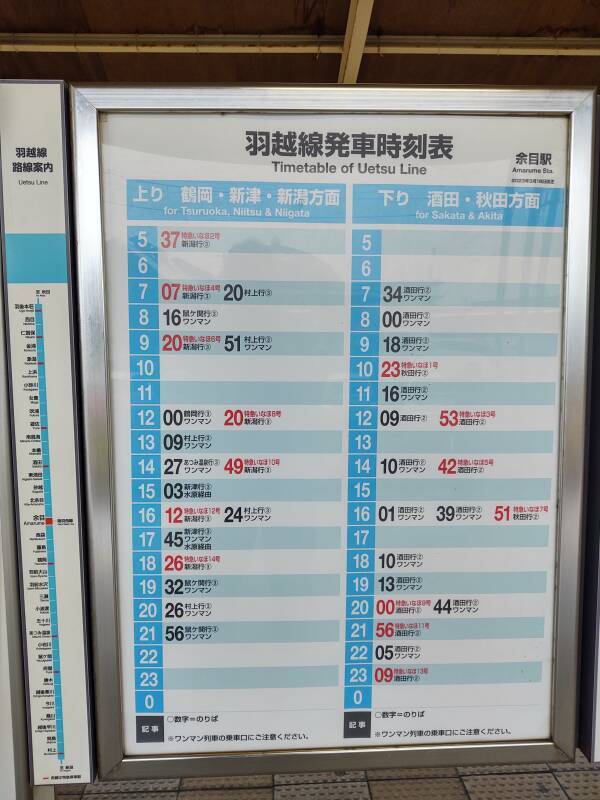
Bus to the Mountain
I have been pleasantly surprised by how many Japanese cities have well-appointed Tourist Information Offices, often with staff with serviceable to excellent English. Tsuruoka, a city of just over 125,000 people, is no exception. I arrived mid-afternoon on a Saturday, and was able to get excellent assistance regarding the local bus service.
All the same, I almost managed to mess it up. I had waited about a half an hour, and then a bus arrived. I figured that had to be mine, as it was within a minute or two of the schedule time. It was just about 90 seconds ahead of schedule.
No, this was in Japan. Of course the buses, like the trains, operate within seconds of their announced schedule. It pulled in, everyone got on and off quickly, and then it pulled out and my bus pulled in, precisely on time.
The bus ride to my guesthouse took was a little over a half an hour. We wound around and made frequent stops in town, and then headed then out into the country. There was a side trip to an onsen, a hot spring spa, and then on to the community at the base of the mountain.

We passed through a large torii, a Shintō gate over the highway, as we approached the shrine area. The community at the base of the mountain seems to be called Haguro-matchi on some maps, and Touge or Toge on some, and simply Mount Haguro on others. The area has many guesthouses, some of which still operate as Shukubo pilgrim lodges.
Guesthouses at Booking.comI had a reservation at the Tamokan ryokan at 38.710719° N, 139.959984° E. The Booking.com smartphone app has rudimentary mapping, and it connects to Google Maps. But in this case, as often happens, the reservation app just gets you close. The trick is to search for the name directly at Google Maps. I got off the bus at the correct stop, only about a hundred meters away, and then had fairly short search to find it.
The Ryokan
A ryokan is a traditional Japanese inn. The first ones were established in the eighth century CE, and two of them founded in 705 and 718 CE are still in operation.
As you enter, you remove your shoes and put on slippers to step onto the wooden floor. There were various sizes, the largest were just barely big enough for me to get my feet into, at least far enough to be able to shuffle along. That was no surprise. When I buy shoes at the "big-box store", I also have to search for the largest ones available.
Here's the view of my ryokan, walking through the rain from the bus stop, It's the building with the trees and shrubs in front of it.
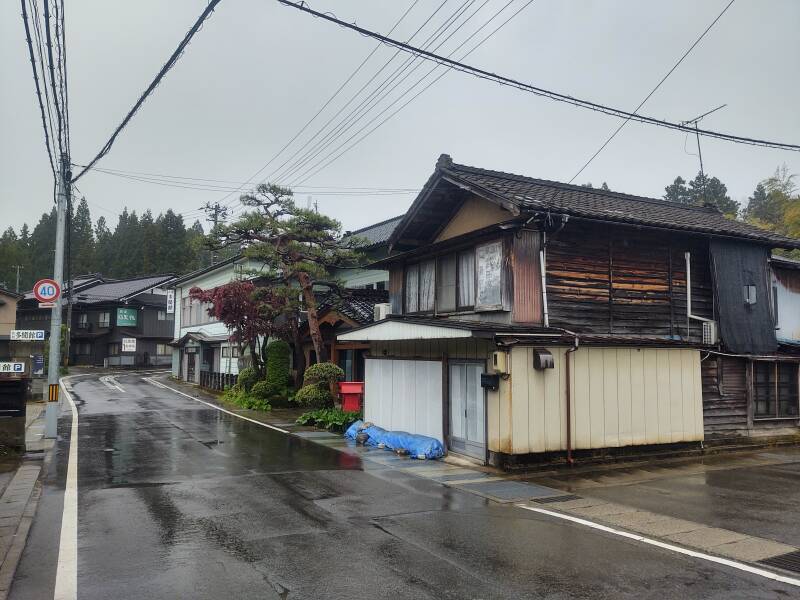
The sidewalk down that side of the street is the typical Japanese design. There's a nearly square concrete channel below, with metal grills on the surface every so often and small holes between each panel. There's no small drop off the pavement into a gutter then a step up onto curbing. Instead the sidewalk is the roof of the drainage channel. It's a smooth surface from the street to the door, with no water-filled gutter to step into or over.
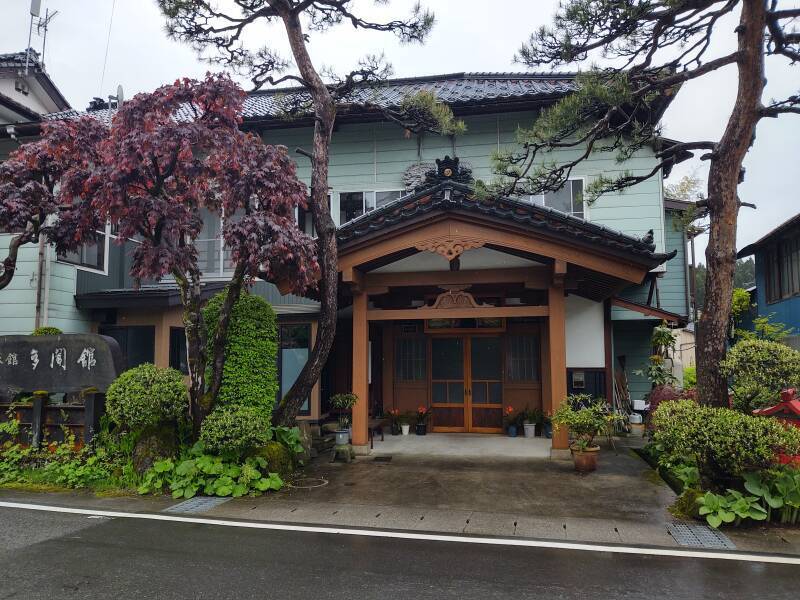
A ryokan has wooden floors in the hallways. The rooms are floored with tatami mats, with rush and hemp weave over a straw core. Fusuma or shōji, wooden lattices with cardboard and paper panels, form the walls and sliding doors. We're looking down the passageway past my room, on the left, and a large sink.

The bathrooms are at the ends of the upstairs hallway, with vinyl flooring and their own slippers. This one is very compact in the Japanese style. Even a small triangular trash bin to fit into the corner.
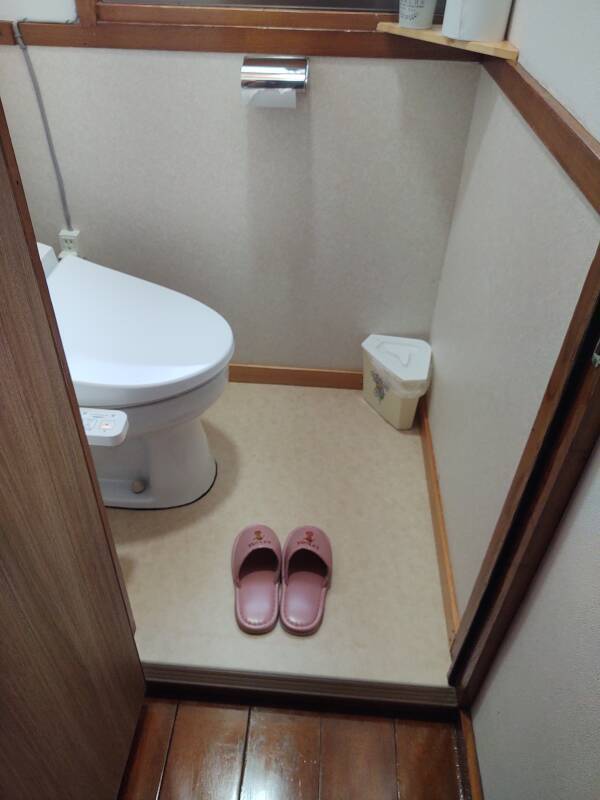

Plumbing
The other bathroom has its own separate washbasin. This one has a sink built into the top of the tank. Plus, there was that large double sink near the center of the hallway.
Entering your room, you leave your slippers on the wooden floor of the hallway. Only bare feet on the tatami.
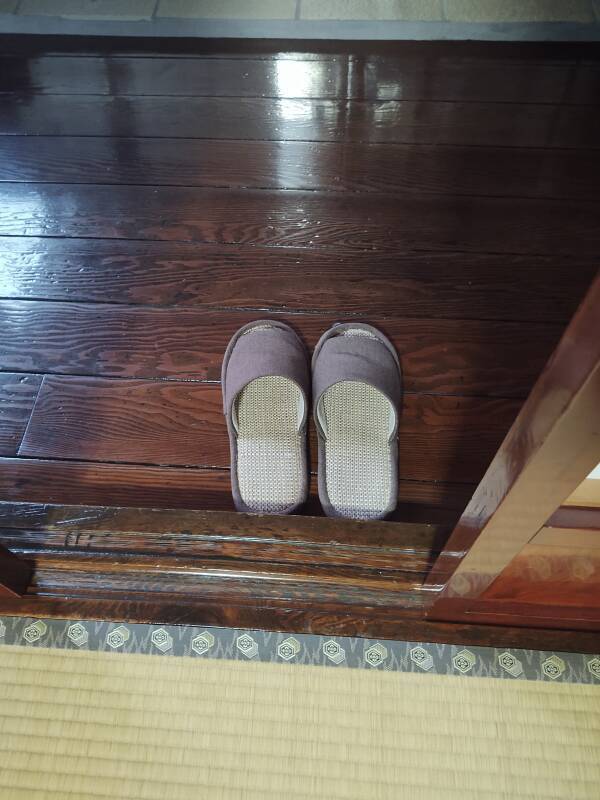
Here's my room, how nice!
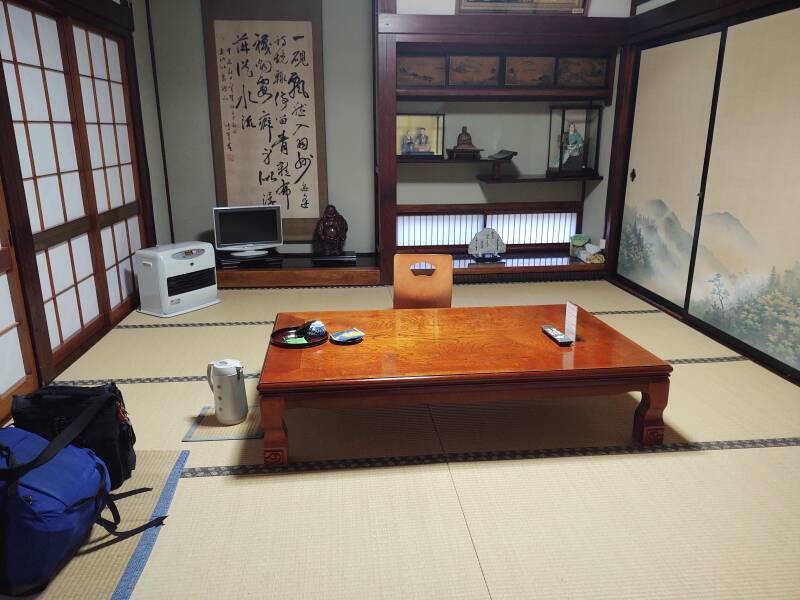
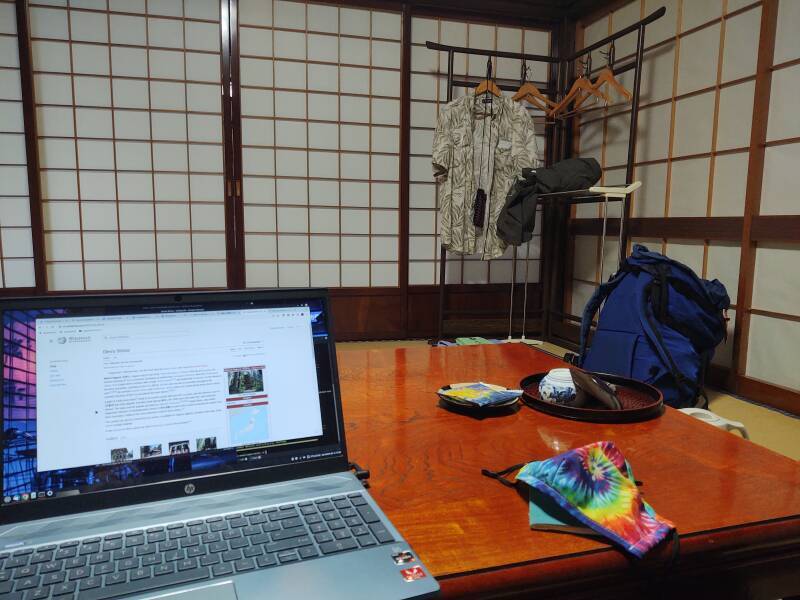
While I was having dinner, staff would move the table to the side and lay out a futon. Then they would reverse that while I was having breakfast the next morning,
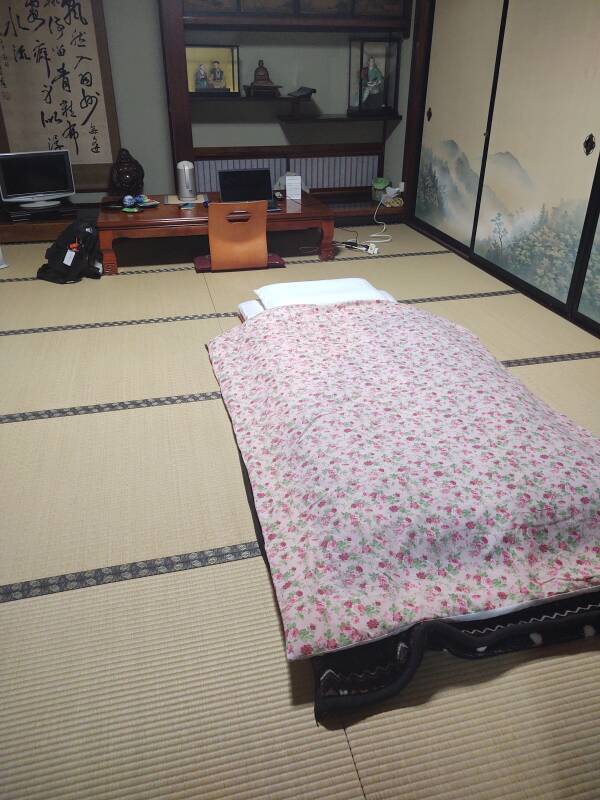
The hot bath was nice after a day out in the cool rain, trekking up the mountain and back. It was about chin-deep when seated and quite warm.
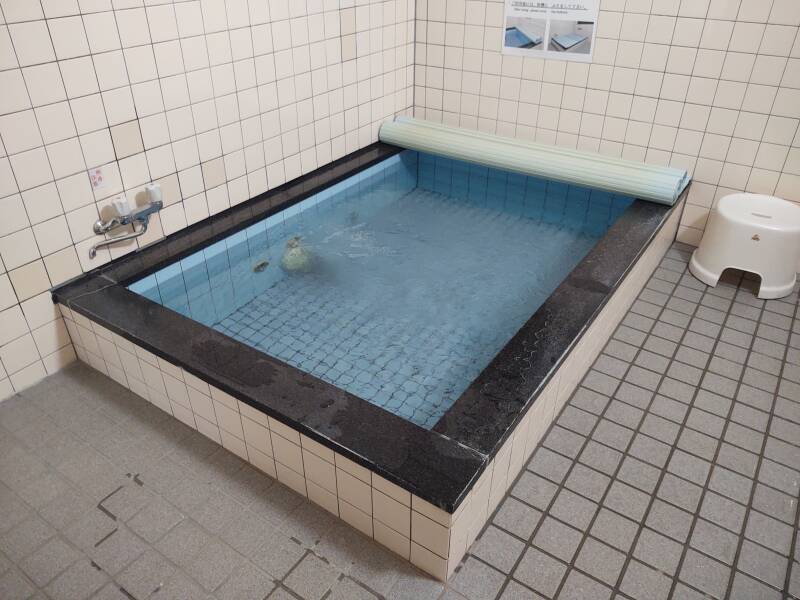
Of course you fully clean yourself off before getting into the shared bathwater.
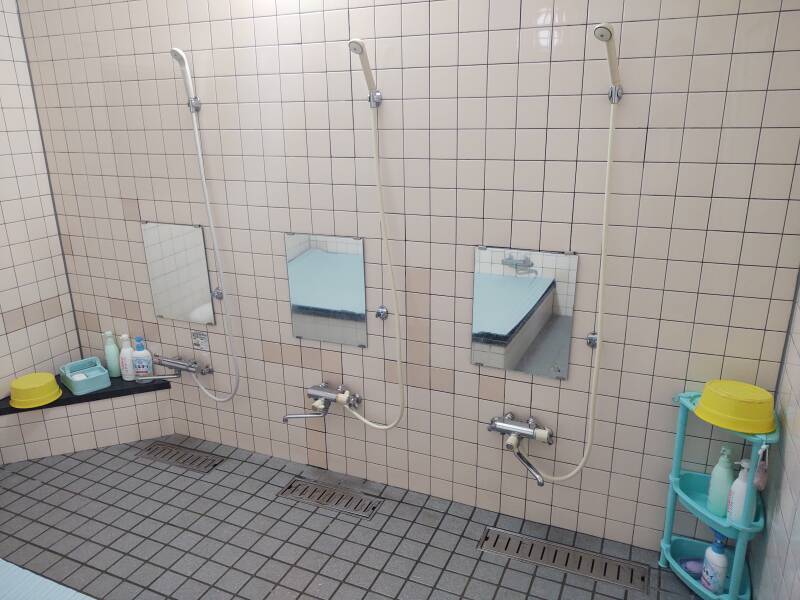
Multiple stools and wash pans are provided.
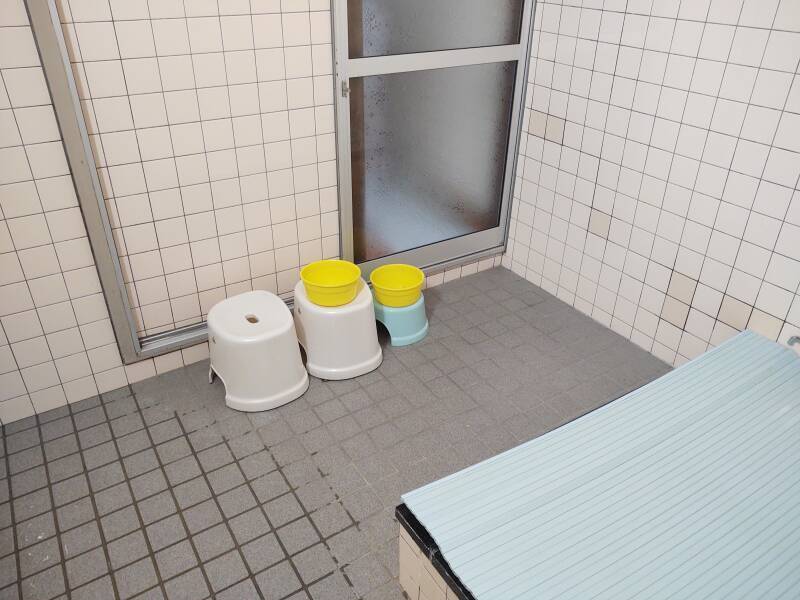
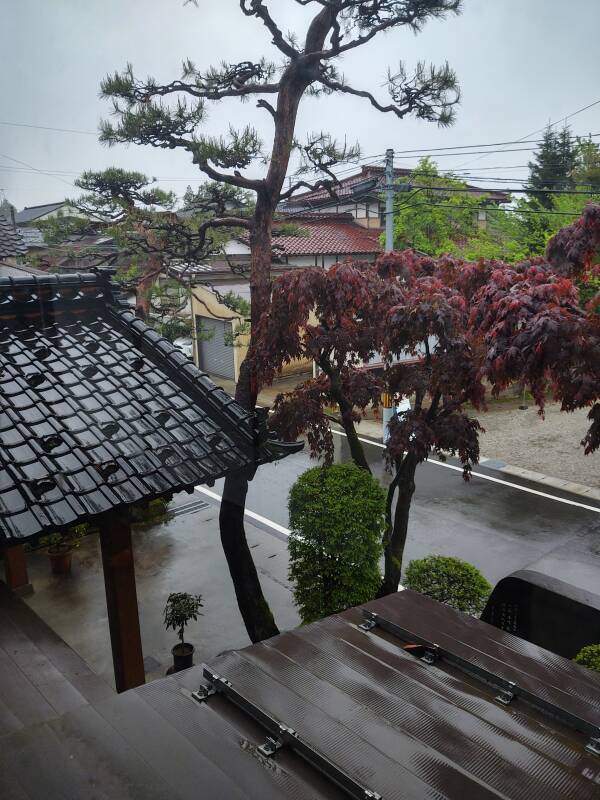
It was dark with mist to light rain while I was at Mount Haguro, very atmospheric!
Maybe you want to see the meals at the ryokan, or maybe you are ready to head for the mountain:
Next❯
Meals at the Ryokan
or
Next❯
Base of the Mountain Path — Suga Waterfall
Other topics in Japan:



































